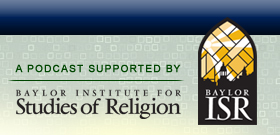

|
Nile Green on Islam in Bombay and Beyond  Date: August 7th, 2016
 Our 300th unique episode! Help us celebrate by sharing our podcast with a friend or colleague. Traditional sociological notions of religion argued that modernization would lead to more “rational” and standardized forms of spiritual faith. Dr. Nile Green, professor of history at the University of California – Los Angeles, examines this thesis in the context of Islam in 19th century India and surrounding regions. We discuss his award-winning book Bombay Islam: The Religious Economy of the West Indian Ocean, 1840-1915, and extend the discussion to his other work on other areas of the globe and more contemporary eras. We begin with a discussion of how he came upon the study of this topic, and he regales us with stories of his wandering youth and his enchantment with the Middle East and South Asia. We also discuss how Nile stumbled upon an interesting diary of some Muslims in 19th century Britain, which provides great lessons for budding academics. Turning to the main topic at hand, Prof. Green details the changes taking place in India during the 19th century, with Bombay becoming an important industrial and commercial center. With 100,000+ Muslims in that city around mid-century (or about 20% of the population), we find a wide range of Muslim practices being celebrated. While earlier scholars of religion, such as Max Weber, would have predicted a more liberal and reformist version of Islam to take hold as industrialization and urbanization progressed, we actually find that traditional (or “customary”) forms of Islamic worship are also flourishing at this time. Using a “religious economies” approach that focuses on both the supply and demand side of religious practice, Nile argues that the British colonialists’ laissez faire approach to regulating religious groups and the demonstration effect of Christian missionaries led to dynamic change in the Islamic marketplace, with more preachers taking a proselytizing approach that incorporated literature printed in the vernacular. Combined with the natural ethnic and cultural diversity of a city as cosmopolitan as Bombay, the result was an amazing array of religious diversity. He then takes this analysis further, both geographically and temporally, to show how Islam spread throughout the Asian region (all the way to Japan) and into the United States. We close with some reflections on what Nile has learned in his studies after all these years and he provides some reflections on the contemporary state of religious violence in the world. Recorded: July 28, 2016.
RELATED LINKS Prof. Nile Green’s bio at UCLA’s Department of History. Bombay Islam: The Religious Economy of the West Indian Ocean, 1840-1915, by Nile Green. The Love of Strangers: What Six Muslim Students Learned in Jane Austen’s London, by Nile Green. Terrains of Exchange: Religious Economies of Global Islam, by Nile Green. Indian Sufism since the Seventeenth Century, by Nile Green. Making Space: Sufis and Settlers in Early Modern India, by Nile Green. RealClearReligion, a great news aggregator for all things religious. Baylor University’s Institute for Studies of Religion. RELATED PODCASTS Ann Wainscott on Morocco’s Religious Foreign Policy. Ann Wainscott on the Politics of Islam in Morocco. Eileen Kane on the Russian Hajj. Matthew Derrick on the Geography of the Umma. Murat Iyigun on Monotheism, Conflict, Europe, the Ottomans, and the Blues. John Owen IV on Confronting Political Islam, Historical Lessons. Eli Berman on Religious Terrorism.
Leave a Reply |
 Search The Podcast
To search the podcast, type a term and click the Search button.
  Browse Podcast Categories
Select a category below to browse the podcast:
   |














